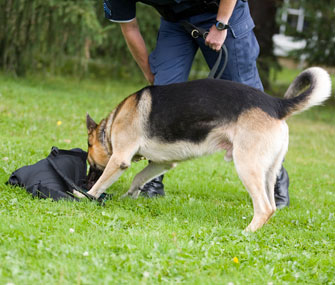Canine Nose Work: A Sport for Dogs Who Love to Sniff
Published on November 13, 2014

Is your dog focused on food or intent on toys? Does he spend a lot of time sniffing as you go on walks? You may have a canine athlete in the making.
The sport of nose work, conceived in 2006 by three California dog trainers, is a fun yet challenging activity for dogs and people. Using his keen sense of smell — at least 10,000 times greater than our own — a dog must find a specific odor (birch, anise or clove) hidden in a container, room, vehicle or outdoor area and alert his handler to the find. To indicate, “I’ve found it and here it is,” the dog may sit, paw at the area, look at the handler or offer some other signal.
Games Dogs Play
Aside from the fun factor, nose work offers a number of benefits to dogs and people. Not least is the thrill of the find, for which dogs are rewarded lavishly with treats and praise. Owners are excited, too, because they don’t know where the scent is hidden until the dog shows them.
This reliance on teamwork helps owners and dogs improve their communication skills, strengthening the bond between them. Shy or fearful dogs may quickly develop confidence. Even shelter dogs can benefit. Some shelters have introduced the sport to help address the special needs of dogs who have excess energy or have been in the shelter for a long period.
“It has definitely made a difference,” says San Clemente-Dana Point Animal Shelter trainer Esther Horn. “The dogs are excited about having a job.”
The sport is also a good choice for dogs who are reactive to other dogs. Dogs work one at a time in class or competition. When they’re not searching, the dogs rest in crates or in an area away from other competitors.
Dogs of any age and ability can play, at home for fun or in nose work trials. A number of breeds and mixes compete and earn titles, including toy breeds. Senior dogs show they’ve still got game, even if they move a little more slowly or deliberately. Nose work can be done indoors or outdoors, on any surface.
Getting Started
Training begins with dogs “finding” and eating treats out of open boxes. The softer and stinkier the treats, the better — that way, the dogs can find and gulp treats down quickly. When they find the treats in the open boxes, the dogs are rewarded with even more treats. It doesn’t take them long to figure out that sniffing at boxes is a fun game. For dogs who aren’t motivated by food, toys can replace treats.
While dogs practice finding treats, owners learn how air flow, temperature and other factors affect scent; handling skills such as managing the leash when the dog is going under or around furniture; and how to interpret the dog’s body language. It’s the handler’s job to read the dog’s cues and determine correctly when he has made a find.
Later, odor is introduced, paired with treats in a box or other container. Beginners start with birch — think Doublemint gum or wintergreen Life Savers — and progressively add anise (licorice scent) and then clove. To begin competing, teams must pass an odor recognition test, or ORT, showing that the dog is capable of recognizing a particular scent.
Nose work is all about positive reinforcement; the word “no” is a no-no, as are any other corrections or obedience commands. Dogs learn strictly through praise, rewards and having fun.
As a team’s skills improve, searches become more difficult. Scent may be placed in small tins, up high on a windowsill or door frame, underneath furniture, or on vehicles. The dogs may be required to search multiple rooms or find multiple odors in a single room.
The presence of computers, refrigerators or air vents can affect the way the scent disperses. Handlers must understand where the scent might go so they can help the dog search appropriate areas and recognize that he may be alerting on a spot far above his head. They may need to ask if they can move furniture or encourage the dog to search corners. Outdoors, wind, rain, snow and other weather conditions can affect scent flow and add to the challenge.
Dog and handler work as a team, but the dog is always the leader: After all, he’s the one with the powerful nose. Letting the dog work and trusting him when he gives an alert is not always easy, but learning to read a dog’s cues and rewarding him for a successful find brings a real feeling of accomplishment.
For more information about nose work, visit the National Association of Canine Scent Work website.





